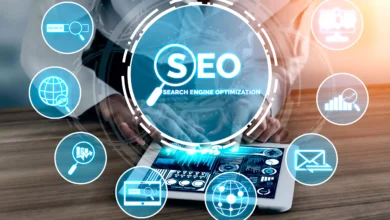Transformative Trends Driving the Evolution of Modern Enterprises

Technology continues to reshape the way organizations operate, compete, and grow. In the past, advancements in machinery or software may have taken years to reach wide adoption. Today, the pace is faster and the implications more profound. Businesses that adapt to new tools and strategies early often gain a competitive edge, while those resistant to change risk falling behind.
Emerging technologies aren’t just tools for automation—they’re becoming integral to core business strategies. From how data is handled to how customer interactions are personalized, tech-driven innovation is no longer optional; it’s a fundamental pillar of long-term success.
Harnessing the Power of Predictive Data
One of the most game-changing developments in recent years has been the shift from traditional analytics to predictive modeling. Businesses are moving beyond hindsight analysis and into foresight planning, using algorithms and machine learning to forecast outcomes, detect trends, and proactively address challenges.
This shift empowers companies to make smarter decisions with less guesswork. For instance, predictive analytics can improve customer retention by identifying patterns that signal churn or dissatisfaction. It can optimize inventory by forecasting demand spikes and help HR departments anticipate turnover before it becomes a disruption.
As companies integrate more data sources—ranging from social media to IoT sensors—the ability to act on real-time insights grows. Predictive modeling is increasingly being used across industries, from finance and healthcare to retail and logistics. This progression marks a critical step in turning data from a resource into a driver of strategic growth.
In line with this shift, resources like businessphrases.net offer terminology insights and content that help business professionals understand and communicate evolving strategies more effectively within teams and organizations.
Expanding Operational Possibilities with Edge Computing
Cloud computing revolutionized how data is stored and accessed, but edge computing is taking things even further. This decentralized approach processes data closer to where it’s generated, reducing latency and bandwidth usage. For businesses, this means faster decision-making, more efficient operations, and enhanced security.
Edge computing is particularly valuable for industries that rely on real-time performance—such as manufacturing, logistics, healthcare, and retail. In smart factories, sensors and machines generate vast amounts of data every second. Processing that data at the edge enables quicker responses to fluctuations in production, equipment wear, or supply chain changes.
Retail businesses, too, are leveraging edge devices to monitor foot traffic, track inventory, and personalize customer experiences in real time. Meanwhile, in healthcare settings, edge computing powers devices that monitor patients’ vital signs and alert providers instantly to potential issues.
As more devices become connected and businesses grow their digital infrastructure, edge computing is poised to become a foundational technology for operational agility and customer responsiveness.
Reinventing Collaboration with Immersive Workspaces
The traditional workplace has undergone a seismic shift. While remote and hybrid work models are now standard across many industries, emerging technologies are taking collaboration to the next level. Immersive workspaces—powered by augmented reality (AR), virtual reality (VR), and mixed reality (MR)—are transforming how teams interact, brainstorm, and solve problems.
These innovations allow employees to meet in virtual environments that replicate in-person experiences more closely than standard video conferencing tools. Design teams can manipulate 3D models together in real time. Project managers can visualize workflows and infrastructure from any location. Even onboarding and training have become more dynamic with virtual simulations.
Immersive tools reduce the limitations imposed by geography, allowing for global teamwork without losing the nuance and creativity of face-to-face collaboration. As the metaverse concept gains traction, businesses are beginning to explore how fully virtual environments might change meetings, presentations, and even customer engagement.
Adopting such technologies requires more than hardware; it also demands a cultural openness to innovation. Companies that embrace these digital experiences tend to foster more agile, adaptable, and resilient teams capable of navigating fast-changing market demands.
Shifting Toward Agile and Scalable Infrastructures
Today’s enterprises can no longer afford rigid systems. The demand for flexibility, scalability, and adaptability has led businesses to reimagine their technological foundations. Microservices architecture, containerization, and serverless computing are helping organizations create systems that are both efficient and ready for growth.
Microservices break down applications into smaller, manageable services that can be developed, deployed, and scaled independently. This modularity allows for quicker updates, better fault tolerance, and improved alignment between development teams and business goals.
Meanwhile, container technology ensures that applications run consistently across different environments—an essential feature for businesses operating across multiple platforms and devices. Serverless models go one step further, allowing developers to focus solely on code while backend infrastructure management is handled automatically.
These innovations reduce IT overhead, accelerate product development, and empower businesses to respond faster to changing customer needs. In the digital era, agility is not just a tech term—it’s a critical business advantage.
Final Thoughts
Innovation is not a one-time investment—it’s an ongoing commitment to adaptability and growth. The businesses thriving in today’s competitive environment are those that actively seek out transformative technologies and integrate them into every facet of their operations. Predictive analytics, edge computing, immersive collaboration tools, and agile infrastructures are just a few of the developments reshaping what it means to run a modern enterprise.
Success in this landscape requires more than adopting the latest tools; it calls for a mindset shift. Businesses must remain curious, flexible, and proactive, always scanning the horizon for what’s next. Those who do will be best positioned not just to survive—but to lead—in the new digital economy.



